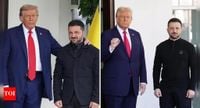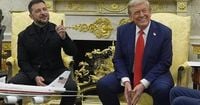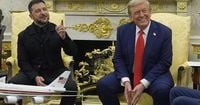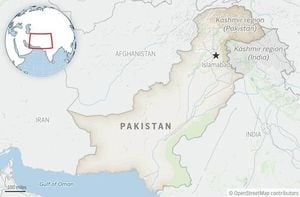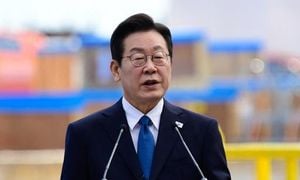On August 18, 2025, the air in the Oval Office crackled with anticipation as Ukrainian President Volodymyr Zelenskyy and U.S. President Donald Trump met face-to-face for the first time since their notably tense exchange earlier in the year. This time, however, the scene was strikingly different. Gone were the sharp words and crossed arms that defined their February 2025 meeting; in their place were smiles, pleasantries, and a surprising focus on fashion that seemed to break the diplomatic ice.
According to the Associated Press, the February meeting had been fraught with visible tension. Trump and Vice President JD Vance openly criticized Zelenskyy, calling him “disrespectful” and warning about the future of American support for Ukraine. Zelenskyy, for his part, responded with clear discomfort, crossing his arms and exchanging pointed glances with the U.S. leaders. The conversation often devolved into the leaders speaking over one another, their gestures betraying deep disagreement. Even the matter of attire became a point of contention, with conservative reporter Brian Glenn pointedly asking Zelenskyy why he wasn’t wearing a suit.
Fast forward to August, and the mood had shifted dramatically. As reported by 1News and the Associated Press, Zelenskyy greeted Trump in the Oval Office wearing a black blazer and buttoned black shirt, a subtle nod toward formality but still a far cry from the traditional presidential suit and tie. The change did not go unnoticed. When called upon by President Trump, Brian Glenn—who had previously criticized Zelenskyy’s wardrobe—offered a complete reversal: “You look fabulous in that suit.” Trump, ever quick to add his own commentary, immediately chimed in, “I said the same thing!” The exchange drew laughter from those present, lightening the atmosphere and setting a more cordial tone for the rest of the meeting.
Zelenskyy, never one to miss an opportunity for humor, volleyed back with a joke at Glenn’s expense. As reported by multiple outlets, the Ukrainian president quipped, “I changed, you’re not,” poking fun at the reporter for sporting the same suit as before. Glenn, for his part, offered an apology, acknowledging the sartorial shift. The lighthearted banter marked a sharp contrast to the previous meeting’s confrontational energy and seemed to symbolize a thaw in relations—at least on the surface.
But the question lingered: why did Zelenskyy opt for a slightly more formal look this time, after steadfastly avoiding suits since Russia’s full-scale invasion of Ukraine in 2022? According to reporting from 1News, the Ukrainian leader’s wardrobe evolution has been more than a matter of personal preference—it’s a deliberate statement of solidarity with his country. From his election in 2019 until the invasion, Zelenskyy dressed much like any head of state: clean-shaven, in tailored suits, dress shirts, and ties. When war broke out, however, he adopted a distinctly different style, favoring sweatshirts, cargo pants, and even military-inspired vyshyvankas—a traditional Ukrainian embroidered shirt—reflecting both the gravity of the crisis and his commitment to the people on the front lines.
Monday’s outfit, a black blazer adorned with Ukraine’s national emblem, represented a subtle shift toward formality without abandoning the symbolism of his wartime wardrobe. As 1News noted, Zelenskyy has not worn a full suit since the invasion began. The decision to don a blazer for this high-profile summit may have been intended to strike a balance between respect for diplomatic norms and a continued show of solidarity with Ukrainians enduring the hardships of war. It’s a sartorial tightrope, and one that Zelenskyy appears to have navigated with careful intent.
Beyond the fashion headlines, the substantive discussions between Trump and Zelenskyy were equally notable for their change in tone. Where February’s meeting had been marked by public disagreement—Trump and Vance warning Zelenskyy about the limits of American support, Zelenskyy bristling at the criticism—the August encounter was characterized by a more collaborative spirit. Both men sat with their hands clasped in their laps, fielding questions from reporters with an air of mutual respect. According to AP, there was even agreement on some points regarding Russia’s ongoing war against Ukraine, though the details of those agreements were not disclosed in the immediate aftermath of the meeting.
The presence of European leaders at the White House summit added another layer of diplomatic complexity. As reported by 1News, Zelenskyy greeted these leaders earlier in the day at the Ukrainian embassy in Washington, again opting for a black shirt and blazer rather than a traditional suit. The choice of attire was consistent throughout the day, reinforcing the message that while Zelenskyy is willing to meet international expectations of formality, he is not prepared to abandon the symbols of Ukraine’s ongoing struggle.
For observers, the shift in both tone and attire was impossible to ignore. The Associated Press described the August meeting as “rounded out with more smiles and pleasantries,” a far cry from the frosty exchanges of February. Even the body language was different: rather than gesturing disagreement or speaking over one another, Trump and Zelenskyy appeared at ease, their hands resting calmly as they answered questions. It was, as one headline put it, a “markedly different” encounter.
Yet, beneath the surface, the stakes remained high. The war in Ukraine continues to grind on, and the question of American support is as urgent as ever. While Monday’s meeting may have been lighter in tone, the underlying issues—military aid, diplomatic backing, and the broader Western response to Russian aggression—remain unresolved. The cordial atmosphere, punctuated by jokes about suits and fashion, may have provided a temporary respite from the pressures of war, but it is unlikely to have changed the fundamental dynamics at play.
Still, in a world where symbolism matters, Zelenskyy’s sartorial choices and the warmer tone of the Oval Office meeting offered a glimmer of hope that diplomatic engagement—and perhaps even understanding—can endure, even in the most challenging of times. The image of two leaders, once at odds, sharing a laugh over a blazer may not end a war, but it does suggest that dialogue and diplomacy are alive and well, at least for now.
As the world watches Ukraine’s struggle and the West’s response, moments like these—small as they may seem—remind us that the human element in politics can sometimes open doors that formal negotiations cannot. Whether this newfound cordiality will translate into concrete support for Ukraine remains to be seen, but for one afternoon in August, the mood in the Oval Office was, at least, a little lighter.
